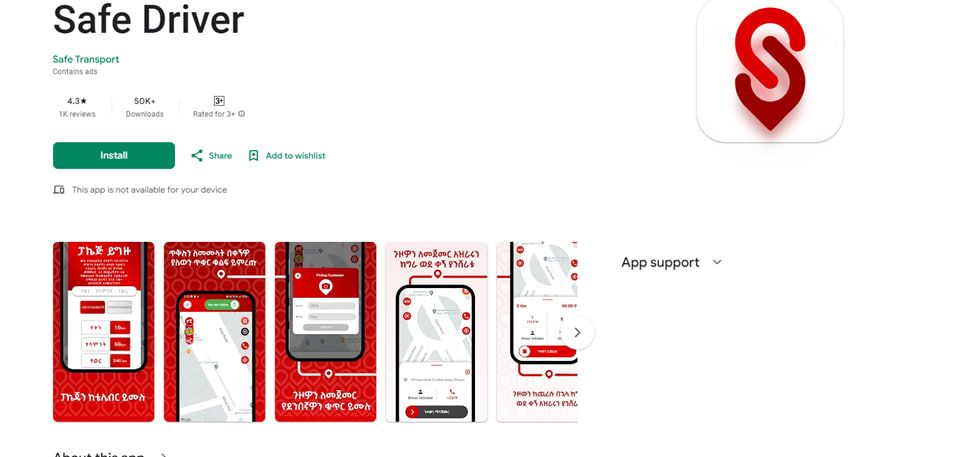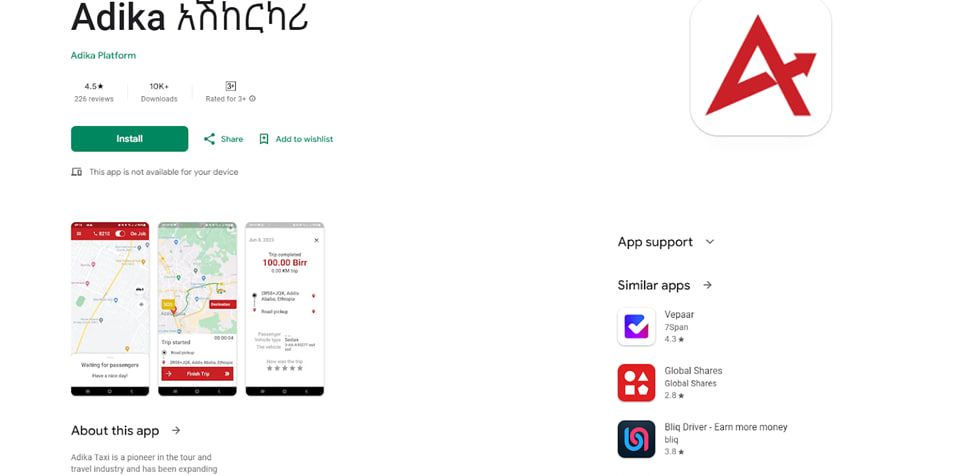Progress for 0 ad
Progress for 1 ad
Progress for 2 ad
Progress for 3 ad


Dagmawi D. Ambaw
Addis Ababa, Ethiopia

Working in marketing and constantly relying on ride-hailing apps to get around in Addis, I’ve often questioned the fixation ride-hailing service providers have on just the customer (supply) side of the business. Shouldn’t attracting and retaining drivers be equally important?
In the mature markets of developed nations, with several dozen well-funded ride-hailing companies competing against one another, driver loyalty programs have already become a major strategy to retain a steady workforce. These programs reward drivers for their performance, commitment, and engagement, creating a win-win situation for drivers and ride-hailing companies.
In Ethiopia’s market, there was a period where RIDE had the market almost fully in its grasp and Feres was able to turn tides by offering perks for both the drivers and passengers.
According to drivers, RIDE did not allow drivers to work with other taxi-hailing companies at that time.
Meanwhile, Feres gave drivers the freedom to work for whichever ride-hailing service provider they wanted. In addition, the company did not charge commission from drivers initially, and when it did, its fees were lower than RIDE’s.
The strategy by Ride to try and monopolize the market they substantially built had a blowback effect that angered the drivers and made them shift to Feres. This, in turn, had customers follow suit. This shift highlights the importance of understanding driver needs in a market of 80,000 registered drivers.
In my attempt to better understand the market, one of my favorite things to do while hailing a ride is to chat with drivers in the hopes of understanding why they choose certain platforms over others. Here are two services I think are doing a great job of attracting and retaining drivers.

One night, after having dinner with a friend, I grabbed a ride. It was a classic case of flagging down a taxi, hoping for a ride. Yonatan (my driver) pulled over, and after confirming he was on the clock and willing to take me, I got in. My curiosity was piqued when I saw him start the trip with SAFE. I asked him why he chose SAFE. Yonatan, happy to share his experience, explained that he appreciated SAFE’s 10-birr flat fee structure over the percentage-based model other providers used. He also mentioned the real-time driver tracking feature SAFE had, a huge plus for his safety, particularly during night shifts, for which Yonatan worked exclusively.
SAFE offers drivers two pricing plans: a daily unlimited option for just 10 birr and a discounted monthly plan at 240 birr.
This subscription model is not new to Ethiopia’s ride-hailing market. LIFT, which is relaunching operations after an 8-month hiatus under co-founder Munib Ahmed’s leadership, previously operated a model that charged drivers a fixed 449-birr monthly subscription fee when it debuted two years ago. According to Munib, the fee was deducted directly from drivers’ phone airtime balances each month at that time. LIFT is now re-entering the market and looking to introduce an updated approach to subscription-based services for drivers.
The biggest players in the market take a commission that ranges between 8 and 12 birr from driver earnings. When added up, these cuts could reach up to 4000 birr per month. Lift believes its subscription-based model will help it stand out from the competition and lure in drivers.
But SAFE goes beyond an affordable subscription model for drivers. It prioritizes driver safety with innovative features:

Another ride-hailing provider with driver-centric incentives as their main strategy for winning in the market is Adika, who rewards drivers with free tire replacements and other perks that have made them an attractive option for certain drivers.
Similar to SAFE, Adika boasts a flat commission rate of 10 birr per trip. This transparent structure allows drivers to keep more of their earnings compared to percentage-based commissions. They further incentivize drivers with a tiered loyalty program.
Here’s the breakdown:
Taking driver investment a step further, Adika offers a program to import electric vehicles (EVs). Drivers can pay an upfront deposit (20–30% of the bank cost) and access an EV. Monthly settlements to the bank are then determined by their engagement and eligibility within the program. By offering a combination of guaranteed benefits and a chance for additional rewards, Adika creates a compelling loyalty program for drivers.
On the passenger side, Adika offers competitive fares and loyalty incentives to attract and retain customers. For new users, Adika provides an initial 50% discount on the base fare for the first few rides. They also offer riders an 8% cashback on all fares earned, automatically deposited to users’ Adika wallets.
While keeping base fares affordable and competitive with industry standards, Adika’s metered rates are 110 birr for the flagging fee and 16.5 birr per kilometer thereafter.
Based on the first-hand conversations I’ve had with various drivers on the platforms, it is clear that focusing on driver needs and incentivizing loyalty is a key factor in their choice of which ride-hailing service to partner with. Happy and content drivers will provide better customer service, which leads to improved rider experiences and higher customer satisfaction and retention.
Both SAFE and ADIKA demonstrate how addressing driver priorities through safety features, affordable pricing structures, and robust loyalty programs can help attract and retain more drivers on the platform. With a steady supply of drivers available and earning better incomes, customers will also benefit from shorter wait times to receive their rides.
As the ride-hailing industry in Ethiopia continues to grow and face increasing competition, focusing solely on drivers may not be enough to provide a sustainable advantage over competitors in the long run.
For early startups and new entrants, directly targeting passengers could be difficult. Feres reportedly had a marketing budget of 20 million birr when it started operations. Not many companies can pull off such funds and spend on massive marketing campaigns to attract passengers.
However, with an initial market strategy that targets drivers, new ride-hailing companies can earn revenue in this highly competitive market. These funds can later be used to reach the other part of the equation: riders.
Thus, platforms that prioritize drivers through value-added services, incentives, and investments in their productivity and incomes will see greater dividends. Higher driver engagement will translate to more satisfied customers.
Building a win-win partnership with drivers should be a strategic cornerstone for companies aiming to become leaders in the mobility sector.